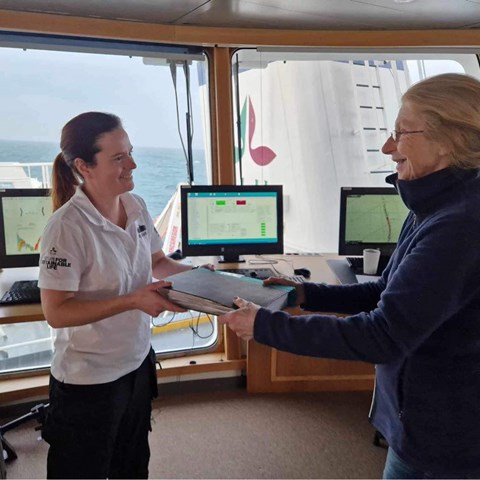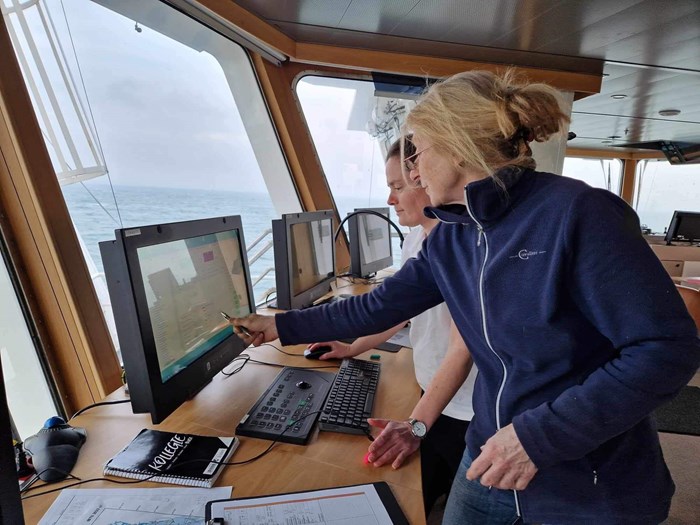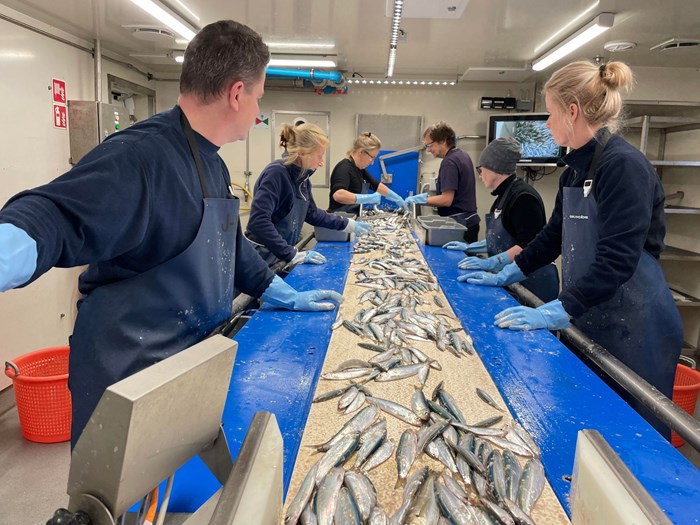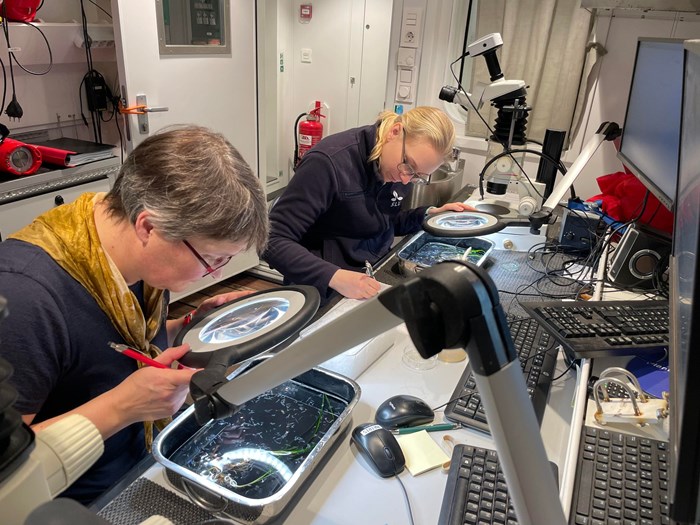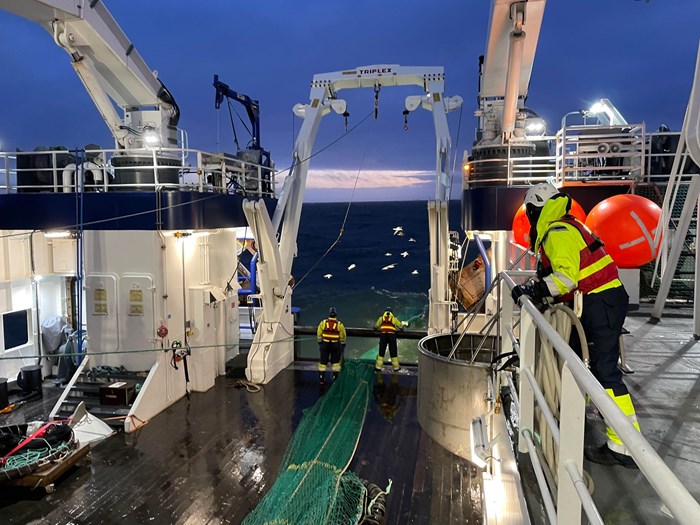Barbara has been the expedition leader for IBTS since 2014. The aim of the expeditions is to produce data that is used for stock assessment of a number of target species such as cod, haddock, whiting and herring in the North Sea.
– As an expedition leader I plan the route and supervise the fishing, and I have various instruments that help me and show where the trawl is and what it is doing, says Barbara.
The first IBTS of the year was conducted at the end of January. It was also then that Annelie made her first trip as the new expedition leader.
– I've been on previous expeditions and before I took over the assignment as expedition leader, I also took the opportunity to follow Barbara in her work. During my first week on board, Barbara was there as a safe support and we had the opportunity to help each other, says Annelie.
The entire expedition is based on good cooperation and teamwork among the crew.
– I get very good support from the experienced crew and the captain. On board we have, among other things, two trawler masters who handle the work with the trawl on deck. The Swedish Maritime Administration is manning the boat and SMHI (the Swedish Meteorological and Hydrological Institute) is involved in collecting hydrographic data such as salinity and temperature on each trawl occasion. In the lab, we have staff from the Institute of Marine Research at SLU Aqua, and lab manager Jan-Erik Johansson leads the work with sampling and sorting of fish. I would never have been able to do this without this fantastic team, it would have been impossible, Annelie continues.
During the expedition in January, the crew experienced winds of up to 25 m/s.
– You're not so fresh during the first day if you go out in bad weather. But seasickness pills usually help in the beginning and before the body starts to rock in and get used to it, says Barbara.
– Svea is also an extremely stable boat, so that makes it easier, says Annelie.
Barbara looks back on her time as an expedition leader and remembers a few times when the trawl survey offered unusual finds.
– It's fun with fish! And of course, we have had some special catches over the years. A couple of times we caught Greenland sharks. They weren't that big though, but still. Another time we caught a rather spectacular fish called dealfish. It is flat and silvery with red fins. At night, we fish with the caterpillar trawl and then we also get unusual finds, one time we caught a seahorse. We have also caught John Dory fish that actually live in more southern latitudes. But sometimes they pop up where we are, the same thing with sardines, says Barbara.
The expedition goes out during the first quarter and preferably at the end of January and the beginning of February. It is the spawning period of the cod fish that decides when.
– We'd rather not be out in bad weather, it's a safety issue and we risk getting poor data. As an expedition leader, you need to keep an eye on weather forecasts at all times and try to plan the expedition based on the weather. You check weather forecasts all the time and these days we have so much good information, in the past you could easily end up in trouble, Barbara continues.
– We also don't want to go out too early in the year, as the days are short and we have less time to fish. The fish stay in different places depending on the light. When it's dark, it stays higher up in the water mass, and when it's light, it stays close to the bottom. That's why we carry out the trawl surveys during daytime, says Annelie.
Finally, Barbara shares her best advice with Annelie, who is now taking over as expedition leader for IBTS.
– Being an expedition leader is a very fun assignment and everyone plays an important role in getting everything together. My best advice is to keep track of the weather, the time and make sure to take advantage of the daylight. "We run a very smooth operation" when we are out, we don't waste any time but focus on getting as much done as possible. I am convinced that Annelie will do a good job as expedition leader. I myself will soon retire, I mean, you have to give in at some point, otherwise this assignment has been a lot of fun, Barbara concludes.
Text: Josefine Karlsson, SLU Aqua
To Vårt SLU
